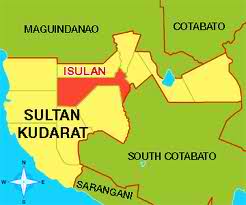Bagobos of Davao region, especially in the olden days are reputed to be fierce warriors. They are very protective about their ancestral lands and boundaries and carry a serious-like demeanor wherever they go. Being uptight about the concept of social respect, they rarely laugh or smile about especially when dealing with outsiders or foreigners. They are diplomatic however and carry about themselves an aura of ancient dignity and power. However, when situations call for a tribal war or pangayao, the Bagobos offer their ritual prayers to their war-deity called Mandarangan, and thereby asked for his protection and victory against their enemies. Mandarangan’s home is supposedly on the mount of the Apo.

Then a war party is thereby commissioned. Led by a Datu or Magani wearing his blood-red suit, young and veteran warriors hasten to the lair of their enemies. A pangayao is impelled by theft, murder or killing of a relative, breaking of a taboo, kidnapping of a wife or child or even trespass to ethnic borders.

To assure a winning outcome of the conflict, Bagobos resort to ambuscades, surprise attacks, poisons or even magic. In their weapon inventory, they have swords called palihuma, krisses, spear, bows and arrows and their kaasag or shields. Thus, the opposing tribe may have to defend themselves in a similar fashion. On occasion of obtaining slaves and women, Bagobos will even conduct hostile raids on Bilaan territories in Davao del Sur. Bilaans are also a group of people found particularly in Malita, Davao del Sur.

Bagobos have also met formidable foes in the past.
The Muslim tribes. There are ancient stories recalling of skirmishes between the Bagobos and their neighboring Muslim brothers.
Bordering the Davao highlands and North Cotabato where most Bagobo territories are situated, is the landlocked region of Maguindanao. This is the home of the powerful Maguindanao Sultanate. Home of the powerful Sultan Dipatuan Kudarat. Leader of the war campaign waged against the Spanish colonial forces in the mid 1600’s. It is said that there were border skirmishes that involved both people.

In fact, in the work of Historian Heidi K. Gloria, The Bagobos: their Ethno history and Acculturation, 1987, an account was made on an encounter between the two: the Bagobos using a kind of magic as defense against the invading “Muslims”.
Thus it is quoted, “My Grandfather, Datu Gapao, used to tell me that wars were very common between the Moros and the Bagobos in the past. The Bagobos possessed knowledge of the art and craft of warfare, so that eventually the Moros gave up fighting us. As an example, one of our techniques is called “pagtangka”, a charm which is placed along the path, e.g. a river, of enemies. As soon as the Moros step on the water where the pagtangka has been placed they will begin to feel strange and would not want to travel further. Another art known to us Bagobos is that of the felling all the banana trees of the enemy with just one arrow. Still another is the “kasin”, which is spun around a surface on which a sketch of the enemy territory is drawn. Wherever the kasin falls when it stops spinning, all the Moros found in that direction will die.”















